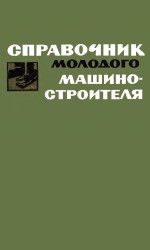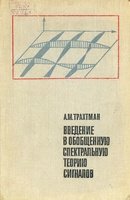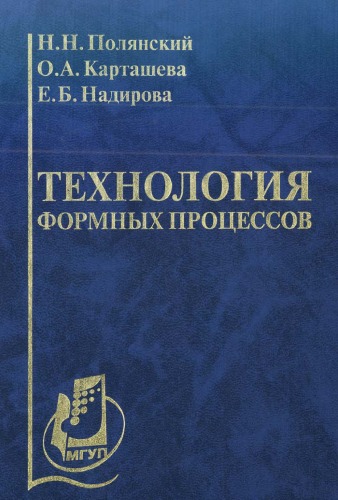- 2 402 202 книги
libcats.org







Feedback Systems: An Introduction for Scientists and Engineers
Karl Johan Astrom, Richard M. MurrayI use this book to assist my graduate study. I think this is an excellent introduction for beginners, especially who expect to learn essentials of feedback control.
I would like to begin by introducing the two authors. Both of them are very famous scientist in the field of automatic control. The first author, Dr. Karl Johan Åström, is an emeritus professor of Lund Univ. He is a notable control scientist, who made significant contributions to many control topics such as computer control and adaptive control. The second author, Dr. Richard M. Murray, is a professor of Caltech. Both of them are IEEE Fellow. Please go to Google Scholar to see how many times their original works have been cited to get a clue about their research.
While mentioning the authors, I just want to point that they definitely have the ability to write a classic book. Unlike many other textbooks, there are not so much theorems, proofs and math in this book. Beginners need not to have solid mathematics to read this book. In fact, if you are looking for more detailed math in control, this is not a very suitable book, where basic ideas and concepts are key points. However, this book is quite well self-contained. The authors clearly know where the math should be employed and where concepts are more important. We need not to have any other complementary book at hand while reading this book in order to get a relatively complete picture of feedback control.
In addition, I would like to talk about the structure of the book. Unlike many other books such as Franklin's Feedback Control of Dynamics Systems, this book places more emphasis on modern control approach (state-space), and some topics in classic control such as Root Locus Method are not mentioned at all. But the frequency domain analysis is still presented. What's more, the state-space approach is introduced before frequency domain approach. Frankly, I love this structure because I prefer state-space to classic approach.
Finally, although it is for beginners, I still suggest you have some experience with automatic control because many details are not included. For example, the book does not teach you how to plot a Nyqusit plot by hand in details although there is a subsection about Nyquist plot and Nyquist criterion. I guess this is the reason why some new students feel disappointed to read this book. However, if you have some experience and are still confused by some basic problems, this is the right book. By the way, the notations and words are friendly and concise.
I would like to begin by introducing the two authors. Both of them are very famous scientist in the field of automatic control. The first author, Dr. Karl Johan Åström, is an emeritus professor of Lund Univ. He is a notable control scientist, who made significant contributions to many control topics such as computer control and adaptive control. The second author, Dr. Richard M. Murray, is a professor of Caltech. Both of them are IEEE Fellow. Please go to Google Scholar to see how many times their original works have been cited to get a clue about their research.
While mentioning the authors, I just want to point that they definitely have the ability to write a classic book. Unlike many other textbooks, there are not so much theorems, proofs and math in this book. Beginners need not to have solid mathematics to read this book. In fact, if you are looking for more detailed math in control, this is not a very suitable book, where basic ideas and concepts are key points. However, this book is quite well self-contained. The authors clearly know where the math should be employed and where concepts are more important. We need not to have any other complementary book at hand while reading this book in order to get a relatively complete picture of feedback control.
In addition, I would like to talk about the structure of the book. Unlike many other books such as Franklin's Feedback Control of Dynamics Systems, this book places more emphasis on modern control approach (state-space), and some topics in classic control such as Root Locus Method are not mentioned at all. But the frequency domain analysis is still presented. What's more, the state-space approach is introduced before frequency domain approach. Frankly, I love this structure because I prefer state-space to classic approach.
Finally, although it is for beginners, I still suggest you have some experience with automatic control because many details are not included. For example, the book does not teach you how to plot a Nyqusit plot by hand in details although there is a subsection about Nyquist plot and Nyquist criterion. I guess this is the reason why some new students feel disappointed to read this book. However, if you have some experience and are still confused by some basic problems, this is the right book. By the way, the notations and words are friendly and concise.
Ссылка удалена правообладателем
----
The book removed at the request of the copyright holder.
----
The book removed at the request of the copyright holder.
Популярные книги за неделю:
#2

В.Бекетов, К.Харченко. Измерения и испытания при конструировании и регулировке радиолюбительских антенн (djvu)
4.82 Mb
#4

Самодельные детали для сельского радиоприемника
Авторы: З.Б.Гинзбург, Ф.И.Тарасов.Категория: радиоэлектроника
1.40 Mb
Только что пользователи скачали эти книги:
#3

Минеральные вяжущие вещества: технология и свойства. Учебник для вузов
Авторы: А.В.Волженский, Ю.С.Буров, В.С.Колокольников.Категория: Строительство. Архитектура
4.53 Mb
#4

Справочник молодого машиностроителя. Справочник для молодых рабочих машиностроительных заводов и учащихся проф.-техн. училищ
Данилевский Владимир Викторович
7.74 Mb
#5

Смазочно-охлаждающие технологические средства для обработки металлов резанием: Справочник
Под ред. С. Г. Энтелиса
11.15 Mb
#9

Введение в обобщенную спектральную теорию сигналов
Трахтман А. М.Категория: КНИГИ НАУКА и УЧЕБА
2.35 Mb
#10

Технология формных процессов
Полянский H.H., Карташева O.A., Надирова Е.Б.Категория: КНИГИ НАУКА и УЧЕБА
46.60 Mb









